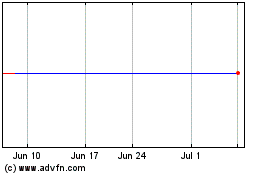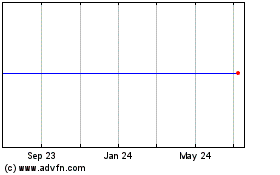Using the Short Ratio to Forecast Turning Points - Screen of the Week
January 28 2014 - 3:04AM
Zacks
This week's Screen looks at a market sentiment indicator called the
'short ratio' to find new stock picks.
The short ratio is the number of shares sold short (short
interest or bets that the stock will go lower in price) divided by
the average daily volume. This is also sometimes referred to as the
'days to cover' ratio because it tells approximately how many days
it will take short-sellers to cover their positions if good news
sends the price higher.
The higher the ratio, the longer it would take to buy back the
'sold' (borrowed) shares. And in theory, the more short positions
there are to cover, the stronger the short covering rally would
be.
How to Use It
Many people who use this indicator like the number of 'days to
cover' to be higher than 8-10 days. It's generally believed that a
short ratio of that size could prove difficult to cover and
therefore trigger a strong rally on any hint of an upswing. (My
personal preference is to take that into consideration, but also
compare it to the industry's average ratio and the stock's own
historical ratio.)
And while I wouldn't recommend using just the short ratio as the
'be all to end all' of screening items, I do think it can be a
great tool for helping define great opportunities.
Short Ratio and Consolidation
Sometimes when I'm looking for stocks that have been in a
lengthy consolidation, I'll look for those stocks with high short
ratios.
Why?
Because consolidation ranges are basically areas of market
indecision. Bets are being made by both bullish and bearish
investors. So finding stocks that are going back and forth near
their price highs with a growing short ratio shows that
ever-increasing bets are being made on prices going lower.
However, if the stock breaks out to the upside, properly
positioned bulls will more than likely add to their winnings ...
undecided traders will now be convinced to get long ... and shorts
will have to scramble to cover their bearish bets. This can be an
explosive situation.
Short Ratio and Bottom Picking
This can also be used quite effectively for bottom fishing
too.
When a stock is getting battered and pundits are wrangling over
whether it's the bottom or not, you should pay close attention to
the short ratio.
Of course, there has to be a reason for a stock to move higher.
So seeing an improving fundamental outlook is important.
But when lopsided market sentiment seems to be at its worst
(reflected in investors buying and selling), the short ratio can be
just the thing to uncover extremes.
For example: for beaten down stocks you can search for companies
near their 52-week lows with increasing short ratios. Or better
yet, look for short ratios above their average values or even ones
that are at (or near) their historical highs.
Short Ratio and Uptrends
For stocks moving higher, try looking for historically high
short ratios for stocks up 20% or more (new uptrend) or that have
just rallied past an important moving average like the 50 or
200-day average. (Funds will often pile in at those points. So a
large short ratio could propel the market significantly higher as
huge buyers bid the market up while panicky shorts chase it even
higher just to get out.)
The screen I'm currently running focuses in on those kinds of
companies: stocks in solid uptrends, despite the recent pullback in
the market, with relatively large short ratios that could send the
stocks soaring if the shorts are forced to buy those shares back.
The parameters to this week's screen are:
- % Price Change – Last 12 Weeks greater than S&P
500
- Current Price / 52-week high greater than or equal to
.80
(Stocks trading within 20% of their 52-week high.)
- Projected One Year Growth Rate greater than Industry
Median
- Short Ratio greater than 10
(Greater than 10 days to cover.)
- Current Short Ratio greater than Short Ratio 1 Month
Ago
(In other words, the short ratio has increased.)
- Zacks Rank less than or equal to 2
(Strong Buys and Buys)
- Current Price greater than or equal to $5
- Avg. Daily Volume greater than or equal to
100,000
Here are 5 of the companies that made the list this week:
BXS BancorpSouth
(11.01 days to cover)
HAIN Hain Celestial
(11.23 days to cover)
QDEL Quidel Corp.
(32.77 days to cover)
GPRE Green Plains Renewable Energy
(11.51 days to cover)
PNFP Pinnacle Financial Partners
(15.45 days to cover)
Try using the short ratio in some of your current screens and
see if it gives you a greater edge and keener insight into what's
really happening in your stocks.
This item isn't available in all screeners (especially the
historical values and industry values), but it is available in the
Research Wizard.
And remember the key to successful screening is in discovering
those screens that have produced profitable results in the past.
And that's exactly what you get with the powerful Screening and
Backtesting ability of Research Wizard.
Learn more about Research Wizard today.
Disclosure: Officers, directors and/or employees of Zacks
Investment Research may own or have sold short securities and/or
hold long and/or short positions in options that are mentioned in
this material. An affiliated investment advisory firm may own or
have sold short securities and/or hold long and/or short positions
in options that are mentioned in this material.
Disclosure: Performance information for Zacks’ portfolios and
strategies are available at:
http://www.zacks.com/performance.
BANCORPSOUTH (BXS): Free Stock Analysis Report
GREEN PLN RENEW (GPRE): Free Stock Analysis Report
HAIN CELESTIAL (HAIN): Free Stock Analysis Report
PINNACLE FIN PT (PNFP): Free Stock Analysis Report
QUIDEL CORP (QDEL): Free Stock Analysis Report
To read this article on Zacks.com click here.
Zacks Investment Research
BancorpSouth Bank (NYSE:BXS)
Historical Stock Chart
From Mar 2024 to Apr 2024

BancorpSouth Bank (NYSE:BXS)
Historical Stock Chart
From Apr 2023 to Apr 2024
